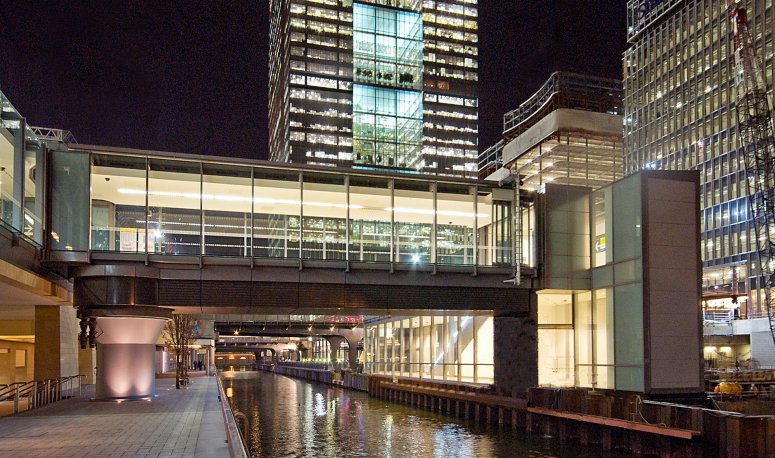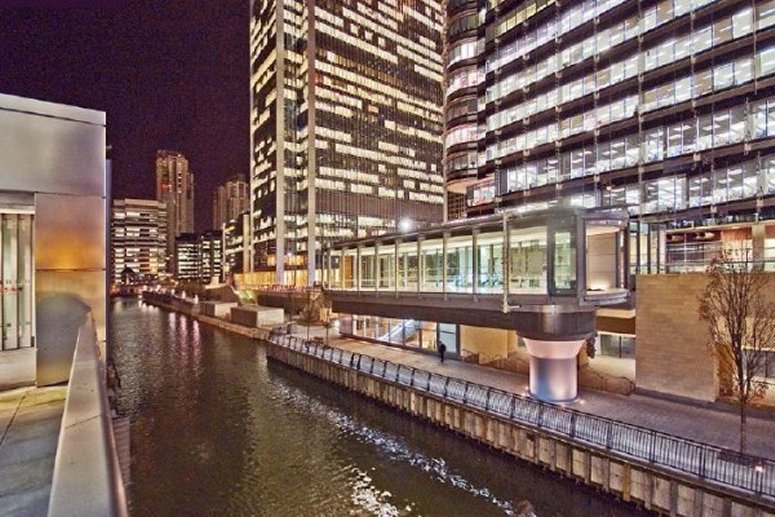Bellmouth Passage Swing Bridges
- Steel and glass swing footbridges
- Calculation of pre-camber
required to ensure correct closure
- Analysis of construction process
and installation of glass panels

Davy
Markham used LUSAS to carry out its own design of two pedestrian swing bridges for the Eastern district of Canary Wharf.
The bridges span the north/south waterway named Bellmouth Passage, and
link Canada Square with Churchill Place - a retail development
constructed at the same time. Waterways
throughout Canary Wharf are in constant use by pleasure craft and were
also used at the time by construction vessels delivering raw materials.
The swing bridges supplement the existing pedestrian links in the area and allow for the passage of small craft when closed and for larger vessels when open. Enclosed in steel and glass, the bridges are of cellular box-beam construction. Davy
Markham handled the complete design, manufacture and commissioning of the main bridge structures, rotating and nose-locking mechanisms, and PLC control systems.
The deck structures were built to a calculated pre-camber and during construction ballast was used to compensate for the eventual weight of the glazed passageway and superstructure, installed subsequently on site. Analysis with LUSAS was needed in order to calculate the amount of pre-camber required to ensure closure due to a 120mm deflection along the length of the cantilever span.

"Analysis with LUSAS was needed in order to calculate the amount of pre-camber required to ensure closure due to a 120mm deflection along the length of the cantilever span."
Phil Snowsil, Senior
Design Engineer, Davy Markham
Share this
article
Other LUSAS Bridge case studies: